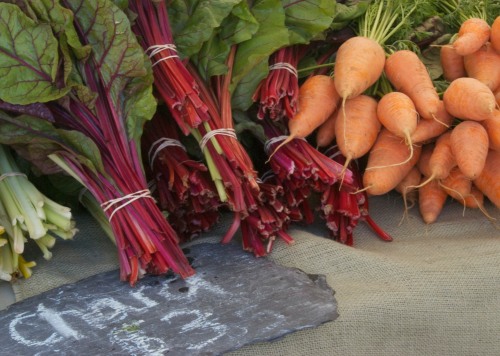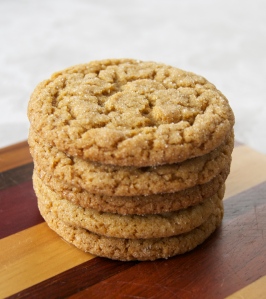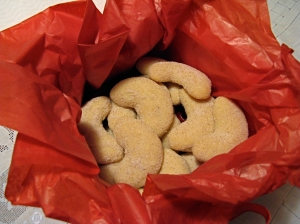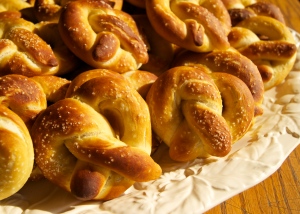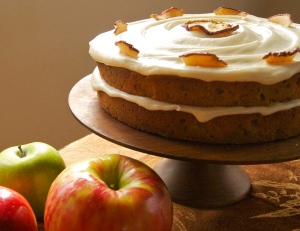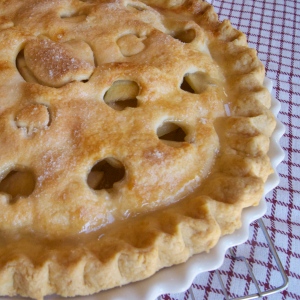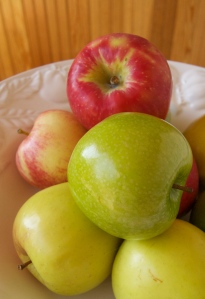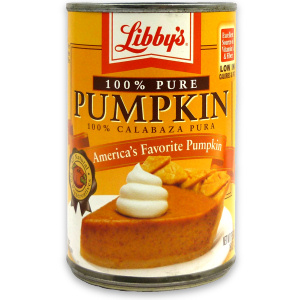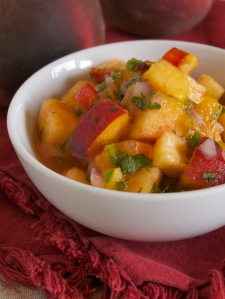We are so lucky in Boulder to enjoy one of the best Farmer’s Markets in the country.
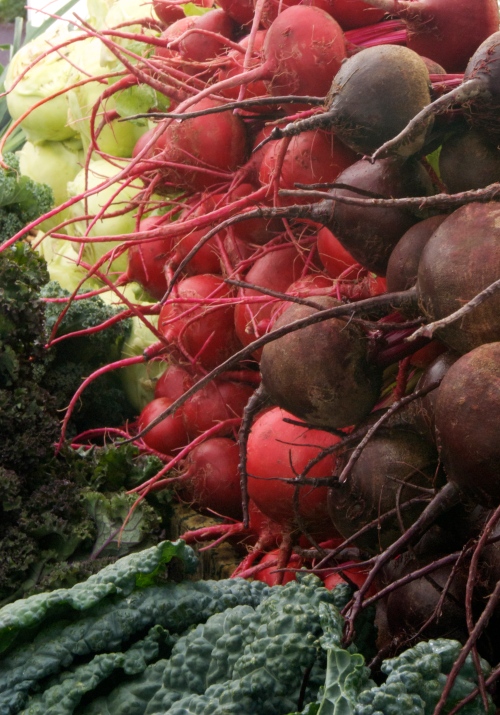
Visiting the market on a Saturday morning is one of my favorite ways to start the weekend. I love the visual splendor of the vegetables, the aromas of the food vendors, the hustle and bustle of the crowd. It is a truly iconic Boulder scene. People have their dogs, their bikes, their kids, their coffees, and their cloth bags. As I pass by, I like to catch snippets of conversations about organic this, tri-athalon that, gluten-free something else. I always stop by and say “hey” to Howie at the Brillig Works booth, who shares my passion for baking (and makes an awesome cinnamon roll). I swing by Shamane’s and eye their pies. Lately, I’ve taken a fancy to the clever marriage of flavor and purpose in the cupcakes sold by Street Fare (to benefit the Boulder Shelter for the Homeless). And I love to make a lunch of veggie dumplings from Sisters Pantry, or some masa yumminess from Tres Pupusas.
One of my favorite ways to enjoy the market is with camera in hand, just sampling with my eyes and taking in the visual delights. Late in the season, peaches are the darlings of the market, with people lined up early for their bag or their box. But the thing that catches me this morning is the unmistakable aroma of roasting chiles.
 If you’ve never seen this contraption, you may not know the joys of fresh roasted New Mexico-style chiles. The roaster is a metal mesh cylinder that is filled with peppers, turned by a crank, while gas burners shoot flames to blister the skins and cook the meat of the vegetable just enough. Then, the peppers are packaged in plastic bags to steam. Shoppers at the market eagerly scoop these up. Once home, the skins come off easily, and the roasted chiles get used for all sorts of delicious recipes.
If you’ve never seen this contraption, you may not know the joys of fresh roasted New Mexico-style chiles. The roaster is a metal mesh cylinder that is filled with peppers, turned by a crank, while gas burners shoot flames to blister the skins and cook the meat of the vegetable just enough. Then, the peppers are packaged in plastic bags to steam. Shoppers at the market eagerly scoop these up. Once home, the skins come off easily, and the roasted chiles get used for all sorts of delicious recipes.
Green chiles can be used to flavor your morning scrambled eggs, give a little kick to your burger, or liven up some corn chowder. But when you want a whole heap of chile flavor, nothing beats this pork green chile from local chef Lyle Davis.
New Mexican Green Chile, Davis Family Style
Serves 8 hearty appetites
Ingredients:
4 to 4 1/2 pounds natural pork butt or pork shoulder (country-style spare ribs can be used in a pinch), cut into cubes
2 cups unbleached flour
1 tsp black pepper
1 1/2 pounds whole, fresh roasted green chiles (don’t even THINK of using canned!)
3 large onions, chopped
4 cloves garlic, minced
1/3 cup olive oil
8 cups chicken stock
2 cups canned, whole peeled tomatoes, coarsely chopped
2 tsp salt (or to taste)
1 cup fresh cilantro leaves, chopped
Directions:
Trim the pork of fat and set one to two large 3-4 inch pieces of white pork fat aside to use later. Cut pork into 1-inch cubes. Place flour, salt and black pepper in a bag and mix well. Add the cubes of pork. Holding the bag closed tight, shake the pork cubes until meat is well-coated.
Heat olive oil over medium-high heat in large stockpot. Add chopped onions and garlic and cook for 10 minutes, stirring frequently, until onion is browned slightly.
Add dredged pork cubes, the reserved two pieces of pork fat and stir with onion and garlic. Allow pork to brown, cooking for up to 15 to 20 minutes. turning frequently, until pork is seared on all sides and bottom of pan has a nice amount of brown bits on it. (This caramelized brown stuff is called the “fond,” and it is what gives meat stews and sauces their incredible deep rich flavor.)
Remove cooked large pieces of fat and discard.
Add chicken stock, green chile (about 1 1/4 to 1 1/2 cups of chopped chile) and chopped canned tomatoes. With wooden spoon, gently scrape bottom and sides of pan to help flavor the stock. With no lid on stockpot, allow chile to come to a boil and then reduce heat to a light simmer. Continue simmering for 1 to 1 1/2 hours, or until pork is tender. Salt to taste. The green chile should be rich and brown in color.
Optional: Just before serving add fresh cilantro to chile.
Serving suggestion: Serve in a bowl with fresh cilantro, shredded cabbage, and thinly sliced radishes and offer Oaxacan-style string cheese. Serve with hot, fresh corn tortillas. Or, pour to cover a dinner plate and top with two fried eggs, serve cooked pinto beans on the side with several types of salsa.
Source: Sylvia Tawse and Lyle Davis
